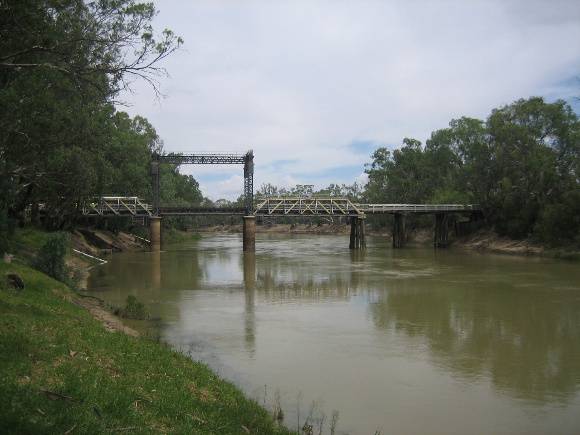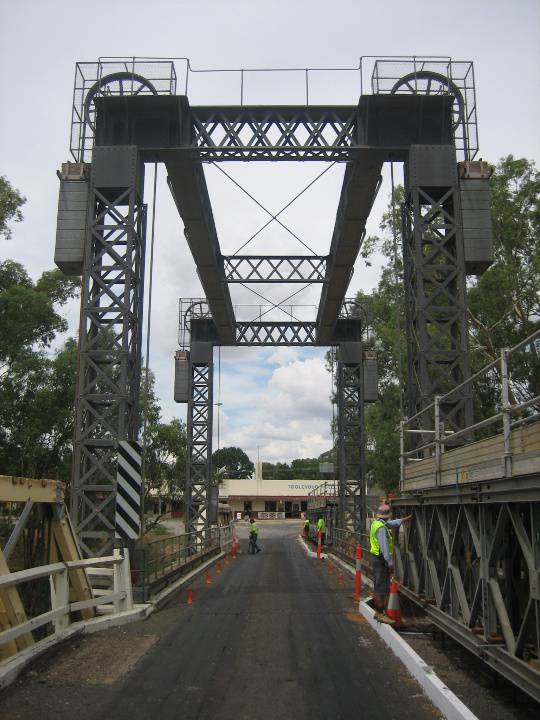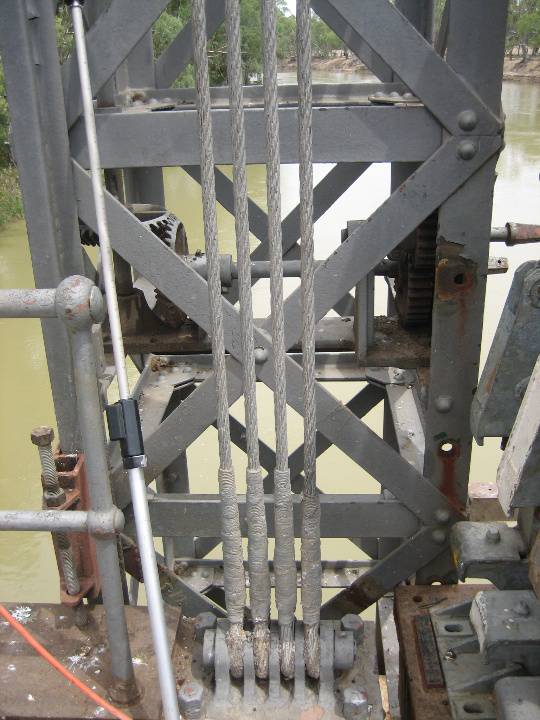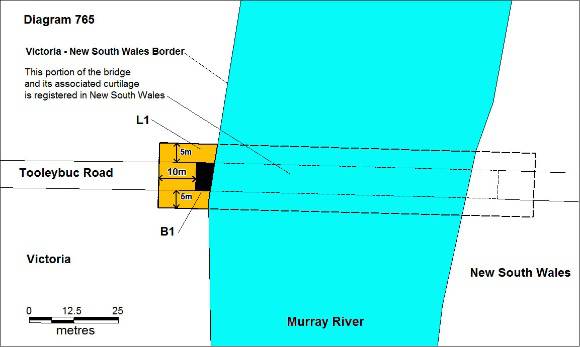| Back to search results » | Back to search page » |
|
TOOLEYBUC BRIDGE
LocationTOOLEYBUC ROAD PIANGIL, SWAN HILL RURAL CITY
File NumberPL-HE/03/1173LevelRegistered |
|
Statement of Significance
What is Significant? The main section of the bridge is approached from the Victorian bank by three approach spans built of round timber girders supported by round timber trestles. There are five girders to each span supported on timber corbels. The lift span superstructure is of riveted lattice steel, including the main support girders. The lift span has been converted recently to allow hydraulic operation. The deck is 8.5m above flood level. The lift-span was designed to be hand operated by one man operating a single winch. The winch sets the counterweights of lead filled steel boxes located on each tower in motion to assist the raising and lowering of the bridge deck. Tooleybuc in New South Wales lies on the extreme western fringe of the saltbush plain, a semi-arid or arid area created by sediments from the Murray-Darling flood waters. The saltbush provided useful fodder and the Murray frontage in this area was largely taken up by 1847. Tooleybuc was on the Puon Buon run, part of the 1840s pastoral empire of Ben Boyd, the whaling entrepreneur of Twofold Bay in New South Wales. In the 1860s the Trust and Agency Co. ran 32000 sheep on the property and in the late nineteenth century J Lawrence held the property and ran 50000 sheep. The high stocking was encouraged by the almost permanent lakes on Puon Buon. Development of the township of Tooleybuc was assisted by the sub-division of the huge station just before the First World War. The Tooleybuc area subsequently became the focus of intensive agriculture, with fruit-growing the principal crop. Easy communication across the Murray River for access to Victorian markets was fundamental to the viability of the grazing and agricultural concerns on the southern New South Wales Riverina. A privately-owned punt was in operation by the 1870s, near the riverside hotel, the Tooley Buc, but it was not until 1925 that the present lift-span bridge was erected by the Department of Public Works in response to pressure from fruit-growers on the New South Side of the River. The bridge was located just upstream from the old punt and was the last lift span bridge designed by Percy Allan. There are only two surviving Murray River bridges with Allan truss spans are Swan Hill and Tooleybuc. Swan Hill Bridge was the first of its type to be constructed anywhere, and the Tooleybuc Bridge was the last. Both Bridges were built with Allan trusses in conjunction with Percy Allan designed steel lift-span bridges. The Tooleybuc Bridge is of historical significance for its associations with New South Wale Public Works Department engineer, Percy Allan, who influenced bridge design throughout Australia. The Tooleybuc Bridge is of historical significance for its role in facilitating interstate trade between New South Wales and Victoria.
Built in 1925, the Tooleybuc Bridge is a timber truss and steel lift-span bridge over the Murray River at Tooleybuc in New South Wales, near Piangil in Victoria. The bridge comprises of a timber bridge deck supported by two 21.8 metre long Allan truss spans each side of a 17.8m steel lift-span bridge. The piers to the centre lift-span are concrete with oval diaphragms giving an appearance similar to the cast iron piers used under older lift-span bridges such as the Swan Hill and Barham Koondrook Bridges. The piers are set into sheet pile cofferdams filled with concrete
How is it Significant?
The Tooleybuc Bridge is of historical and technical (scientific) significance to the State of Victoria.
Why is it Significant?
The Tooleybuc Bridge is of technical (scientific) significance for its sophisticated design and construction. The Tooleybuc Bridge was the last of a series of bridges over the Murray River that incorporated central lift spans with innovative truss spans.
Group
Transport - Road
Category
Road Bridge









